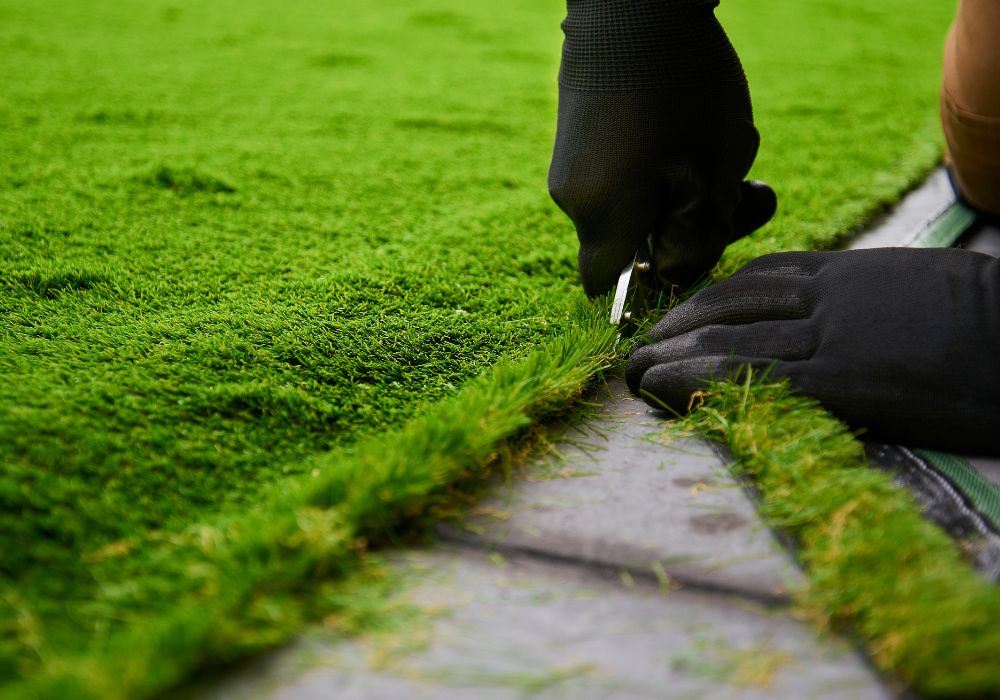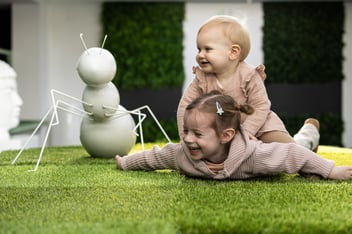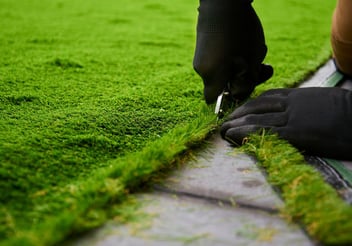Underlay artificial grass: where can I install it and what do I need?

No more worries about mowing, weeding, fertilising a green lawn, but the appearance of a fresh little lawn, does that appeal to you? Artificial grass is then your ticket to a green garden or terrace without all the drawbacks and the extra work. It is also nice to know that fake grass is a very easy and versatile product that can be used on numerous surfaces and places. We give you in advance what you need for a successful installation depending on the substrate!
So you can easily install it yourself or know what to ask your gardener or professional.
Artificial grass on a (roof) terrace? 'tis bound to be!
Real grass is difficult -if not impossible- on a terrace due to maintenance, weight, etc. With a fake grass carpet, however, you create that wonderful feeling of a lawn you can shuffle around on barefoot. Of course, there are a few golden rules:
Type = use: match the type to your use. Will there be a dining table on it, will you have children playing on it, etc? Then definitely choose a shorter, sturdier type, such as the RGP512, RGP457 or the Eco01. These are easy to maintain. Do you mainly want one green and lush effect? Then choose a longer sprig.
Substrate: the latex backing of the carpet can be quite rough. So if you install on an EPDM or other vulnerable surface, be sure to opt for a shock-absorbing mat that can counteract friction and any resulting damage.
Easy installation on a smooth surface
It is best to think of fake lawn as a kind of carpet, but for outdoors, and you will understand that it is important to provide a smooth/level surface. This is because structures in the ground can become visible over time. You certainly don't need to install on a stabiliser or concrete, but it can certainly be done. Take the following into account:
- If you install artificial grass on concrete, it is best that it is level and slightly sloping. That way, rainwater coming through the mat can go one way. An existing concrete with holes is best repaired before the mat is laid. Fixation can be done with Tec7 or by anchoring the corners with heavy items or furniture.
- When installing artificial lawn on tiles or bricks, it depends on the width and structure of the joints. If these are deep and wide, it is best to place a shock-absorbing mat, which neutralises height differences. Fixation can again be done with TEC7 or nails, depending on what you install on.
Permeable subsoil as a basis
Are you going to lay the artificial grass in your garden? Then always choose a permeable subsoil such as skimmed loam. You only need a top layer of sulphur to facilitate levelling. Placing it on soil is possible, but it takes a lot of work to get black soil even. Sulphur is very fine, so it is easy to level and pull it taut. Once compacted, this layer is very stable and retains its stability easily in rain, intense heat or cold.
Always place a geotextile between the sand and the turf because organic soil can always produce germs. The textile ensures that these do not get through or grow through your mat. Fix your turf with the Resifix: this is a kind of piquet with a zigzag shape at the end. Once placed in the ground, it is therefore difficult to move because of its shape.
The above substrates are just about the most common types. So if you are going to install artificial grass yourself and you wonder whether your subsoil is suitable, it is always best to ask one of our experts for advice. They will look at your situation and give advice on the best option for a beautiful, long-lasting & green result. Avoid expensive repairs and mistakes due to bad material and always get thorough information before you start!
You can always contact us by phone or discover the large collection of natural artificial grass in our large show garden.



